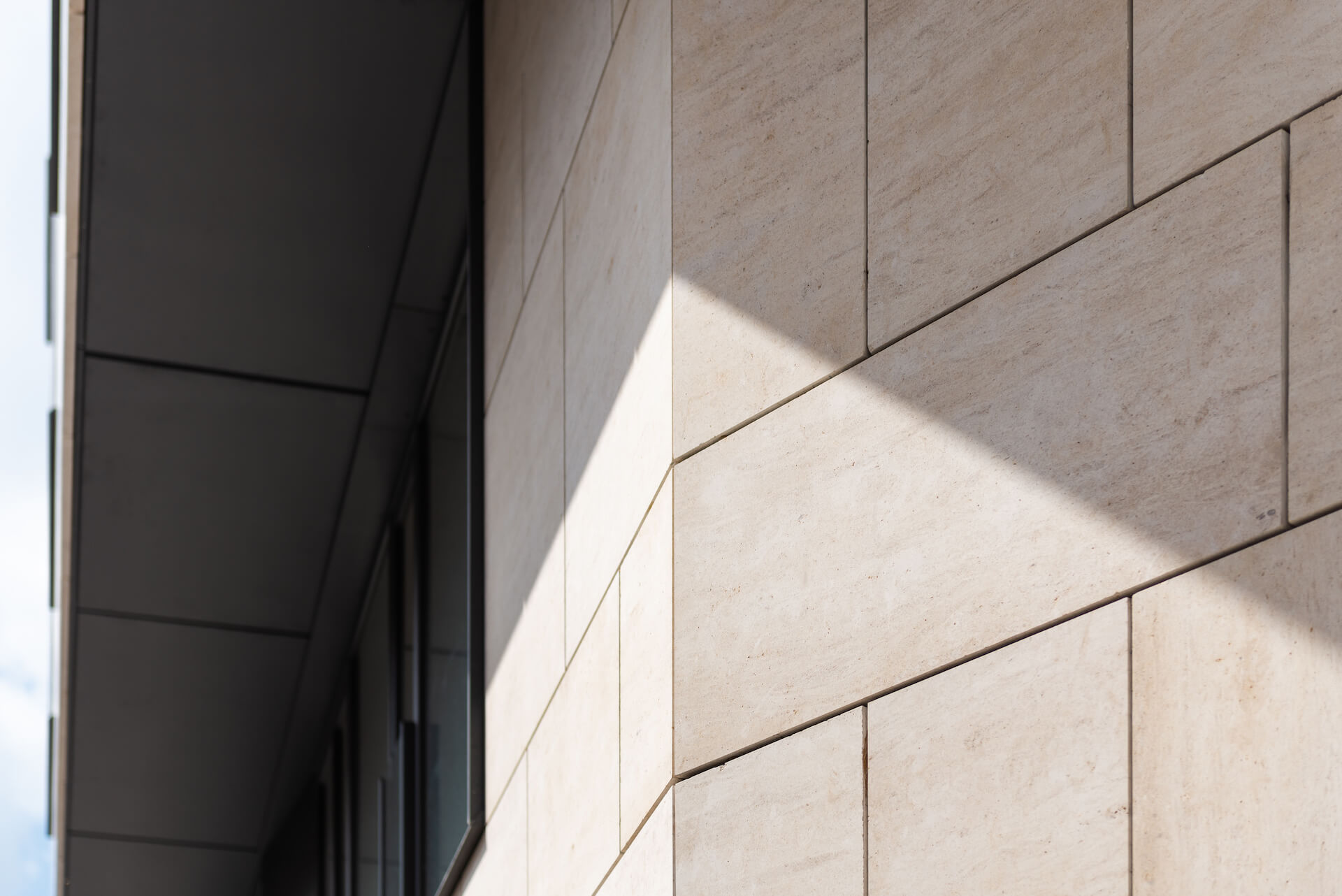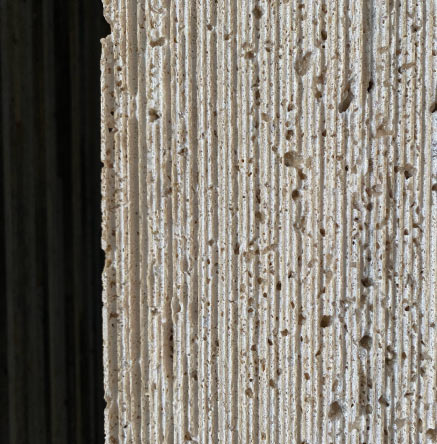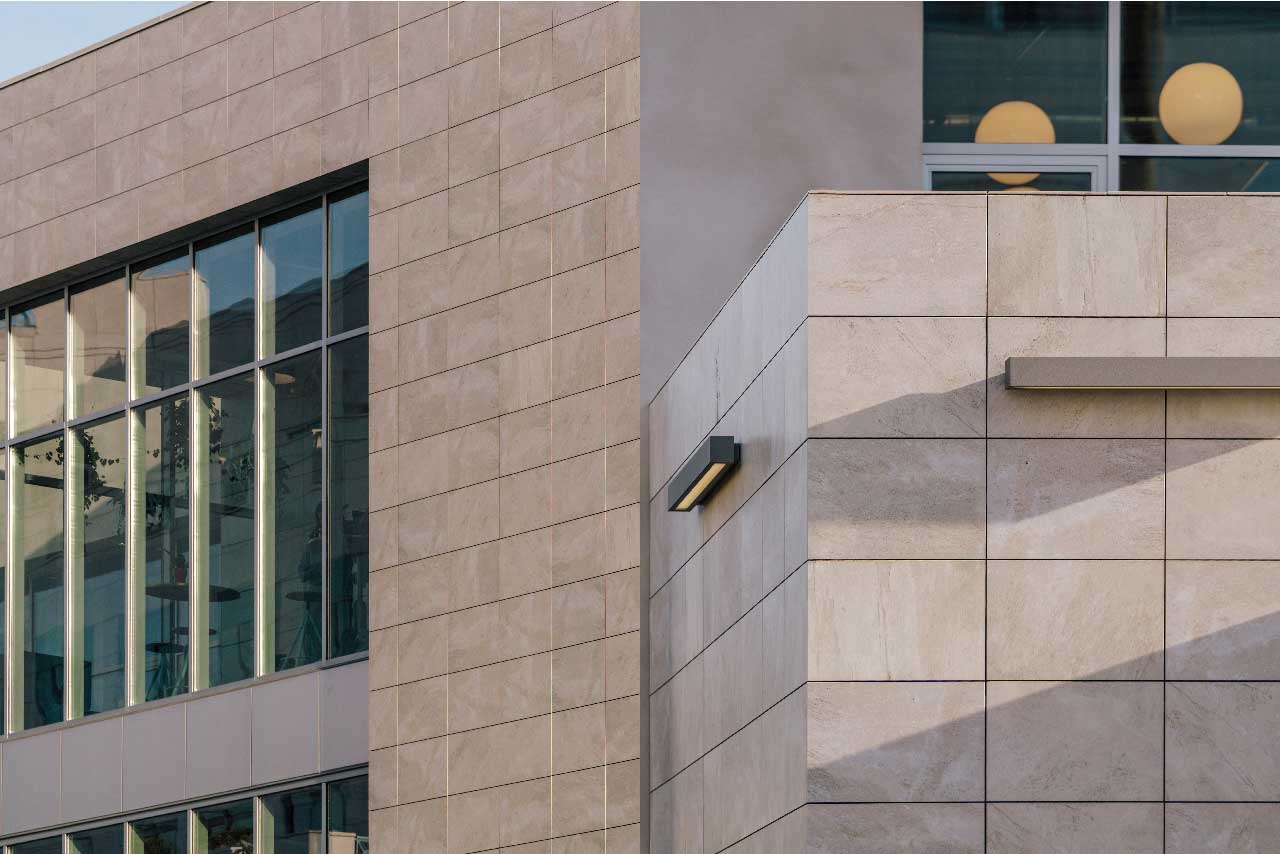
Building stones
Building stones are one of the valuable mineral deposits, and their use in the interior and exterior of commercial center buildings, streets and city squares has a great effect and glory.
In general, building stones are divided into two groups of decorative stones, facade and rubble stones, based on the geometric shape and dimensions obtained from extraction.
Those types of building stones that have a beautiful color and appearance and can be made from them are called decorative and facade stones.
Most of the building stones are limestone and dumolitic (including travertine, porcelain stone, marble and marble) and granites.
Limestones have a special place among building stones due to their suitable hardness, ability to cut, sub and polish, variety of colors, good resistance, easy extraction, impossibility of altering and huge reserves.
In recent years, the use of stone in the facade of buildings has increased due to the ease of implementation and reasonable price, and it has replaced local materials.
Types of stones:
Carcass and construction stones
Different stones in nature that do not contain ore that can be separated in the current conditions, and its processing is not common and common or economical, and according to the Ministry of Mines and Metals, it is not a decorative stone and is generally used for building walls, road construction, and wall construction. Things like that are used.
Decorative stone
Crystallized and non-crystallized sedimentary, igneous and metamorphic rocks that do not contain minerals that can be separated in the current conditions and their processing is common and affordable such as cutting and polishing, such as marble, pseudo-marble (marble), travertine, granite and the like.
The number of decorative stone mines is 704, which is 13.2% of the country's mines.
Rosubi stone
An important part of valuable mineral reserves is formed in sedimentary rocks, potassium salts, gypsum, limestone, phosphate, uranium, manganese and things like sandstone, building stones, cement and pottery clays are obtained from sedimentary rocks.
travertine
Travertine is a type of building stone that is likely the result of ancient spring activity that no longer exists.
Most of the travertine deposits are located in the path of the fault or faults that were created by the spring or springs in the past and are now dry and ready to exist.
Travertine is one of the sedimentary rocks that has a porous structure.
Another category of building stones used is igneous and metamorphic rocks.
The main stone used in the facade is travertine
Igneous rocks
(This category of stones has an internal origin and there is absolutely no stratification in it).
Igneous rocks are obtained from the cooling and crystallization of talc.
As a result, lava covers a large part of the earth's surface. These lavas are the tephtal that loses its gas and creates igneous or volcanic rocks, of which basalt is the most abundant and famous.
A) basalt
The most abundant igneous rock is output; This stone is known as basalt on land. In Iran, this stone can be found in different places, including Mount Damavand, and in Azerbaijan, this stone is used in construction due to its resistance to natural conditions.
B) Granite
Granites are igneous rocks that were originally lava or molten rocks that cooled over thousands or even millions of years and turned into granite.
These stones used in buildings are considered to be one of the most important and abundant intrusive igneous rocks, which are often gray in color and sometimes appear in the form of mud and green.
Compared to sedimentary rocks, granite is more resistant and stronger against erosive factors.
Granite is generally used in road construction, roads, sidewalks, pavements and in most government buildings, especially airports, so it is more valuable than other sedimentary stones.
Stones of transformation
These rocks may have the same chemical composition as limestone, and some of them are igneous rocks, but they are different from these two categories and are known as metamorphosed rocks.
The factors that transform rocks into metamorphic rocks include heat, pressure, and a series of chemical changes that change both the texture and mineralogical composition of the rock.
Marble
Marble is one of the metamorphic stones that is made from the single crystallization of carbonate rocks in metamorphic conditions. One of the most famous metamorphic stones used in buildings is marble, which is of high quality in terms of history and age.
The purest marble is snow white. Many marbles contain impurities that are the result of metamorphosed minerals from primary sedimentary rocks.
Marbles sometimes have different colors due to impurities.
Red marbles are due to the presence of hematite iron oxide, and its brown color is due to the presence of limonite iron oxide.
Black and green marbles contain organic materials and minerals such as hornblende, serpentine, etc.
Chinese stones
It refers to all types of fine-grained marbles with a dimensional and shaped crystalline texture, which is mainly composed of small amounts of calcite and lastonite, dolomite and quarter.
The deposits, known as crystals, consist of coarse-grained, all-crystalline marbles of both dimension and shape, which occur in areas of higher to moderate metamorphism.
Marble
Marble stones are the most diverse decorative stones in terms of design and color.
The construction stone mines of the country are 25%, the largest share of which is marble with 54%.
block or beat
World-wide production of excellent quality products from blocks
Or KubCube Sangef is based on a series of standard processes.
Usually, stone processing is done on building stone blocks, these blocks have different shapes and dimensions, but they are often in the form of cubic blocks.


